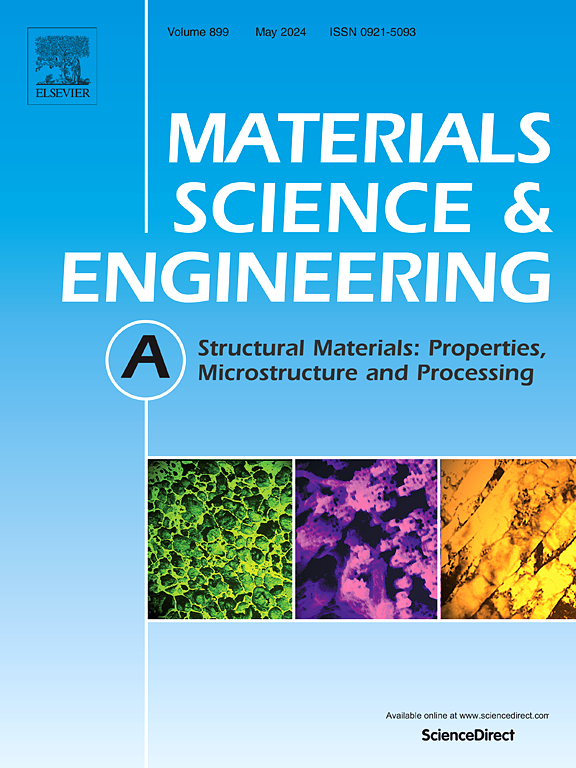Enhanced mechanical performance in additively manufactured AF9628 steel: Role of cellular segregation in phase transformation
IF 6.1
2区 材料科学
Q1 MATERIALS SCIENCE, MULTIDISCIPLINARY
引用次数: 0
Abstract
In this study, AF9628 high-strength low-alloy steel was fabricated using laser melting deposition. The initial non-equilibrium microstructure exhibited cellular segregation of elements such as Cr and Mo, with cellular structure dimensions of 20–30 μm. Samples were heated to 950 °C and held there for 10 min before being cooled at four different cooling rates-that is, 0.5, 1, 10, and 50 °C/s-to research the impact of cooling conditions on the microstructure. The results demonstrated that under specific cooling conditions (1 °C/s), cellular segregation could effectively limit the growth of bainitic/martensitic substructures. This becomes an effective component interface that can hinder the phase transformation, in addition to the grain boundaries. When the cooling rate was too fast or too slow, martensite and bainite grew throughout the cellular structure, the phase-transformation restriction by cellular segregation was limited. At a cooling rate of 1 °C/s, its mechanical properties (tensile strength of 1865 MPa and elongation of 10.3 %), exceeding those of samples prepared by other heat treatment routes. The results of grain reconstruction confirmed the restrictive influence of cellular segregation on bainitic/martensitic transformation. This approach to microstructure control opens up new routes for the optimization of the microstructure and properties in additive manufacturing of low alloy steel.
求助全文
约1分钟内获得全文
求助全文
来源期刊

Materials Science and Engineering: A
工程技术-材料科学:综合
CiteScore
11.50
自引率
15.60%
发文量
1811
审稿时长
31 days
期刊介绍:
Materials Science and Engineering A provides an international medium for the publication of theoretical and experimental studies related to the load-bearing capacity of materials as influenced by their basic properties, processing history, microstructure and operating environment. Appropriate submissions to Materials Science and Engineering A should include scientific and/or engineering factors which affect the microstructure - strength relationships of materials and report the changes to mechanical behavior.
 求助内容:
求助内容: 应助结果提醒方式:
应助结果提醒方式:


